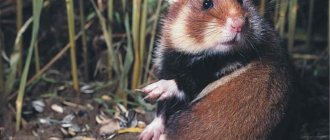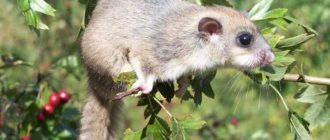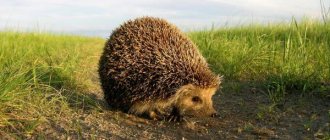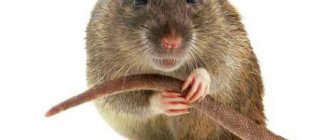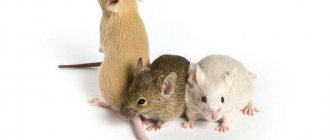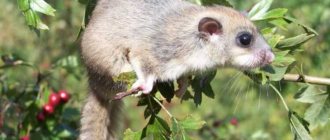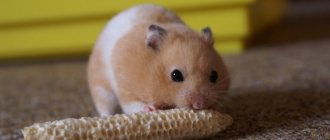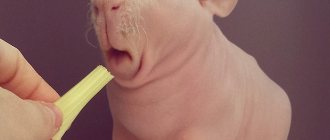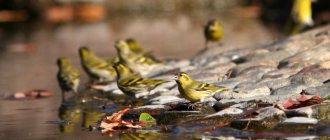The typical representative of the mustelid family is the ferret. They perfectly complement the fauna of the European part of our Motherland, living on forest edges, in the steppes and near large bodies of water. Recently, they are often introduced into homes, because a domestic ferret is a playful and active companion for any family member. However, of no less interest are the wild individuals of the ferret family - predators, aggressive and courageous, who will definitely not allow themselves to be offended.
Appearance
The wild ferret is primarily brown and black in color, with darker tails, paws and muzzle. White fur goes on the forehead, chin and ears. Lighter fur also appears on the sides and belly of the animal. Sometimes you can find other variations of what a ferret looks like - with completely red fur or albino ferrets - these are called furo.
The shiny fur is not thick, but long - on the back it can reach up to 5-6 cm. The fur becomes fluffier after the molting period - in late autumn, and before that it is not so easily soiled and lighter.
The shape of the head is oval, flattened on the sides. The head has a smooth transition line to the neck, flexible and long. Low ears with a wide base stick out on the head. The eyes are small but shiny; most often, brown eyes are found in trochees.
Ferrets have a very slender build. The animals grow from 30 to 50 cm in length. The legs are short (the hind legs are on average only 6-8 cm), but very strong and ideally developed for frequent digging of the ground. The limbs have five fingers with very sharp claws, so if you manage to catch a ferret, it will definitely be able to fend for itself.
Colors
Ferrets with a clear pattern are especially popular among domestic ferrets. All the variety of colors is combined into four main groups:
Standard. The guard hairs and underhairs are pigmented. White color is no more than 10%. Coat color – any. The color can have different saturation - this feature distinguishes standard-colored ferrets from monochromatic ones.
Roan. With this coloring, half of the hair of ferrets is white. The white color of the hairs is evenly distributed along the entire length, or is present only at the base. Along with white hair, gray hair may be present, alternating with pigmented hair. There is a mask on the face.
Siamese. Like Siamese cats, ferrets of the same name have a tail and paws that are darker than the body, and a V-shaped “mask” on the face. The nose is light and may have specks on it. The mask also comes in a T-shape. The color of "Siamese" varies from light brown to dark brown. There are other shades - for example, champagne.
Solid. There is no white fur. The guard hairs and down hairs are colored equally. Any colour. The intensity of the color is the same throughout the body, while all other colors of the paws, abdomen and tail are richer. The animals do not have masks of this color. The eyes match the color of the fur.
Varieties
Stepnoy
The largest of all ferret species. They grow up to 56 cm, and their weight can exceed 2 kg. They are also called light because of the specific undercoat that shows through under the sparse brown hair. The color on the limbs and tail is dark, while the muzzle is painted with a mask.
It is not difficult to say how many years the steppe ferret lives - their age rarely exceeds 10-12 years.
Forest
The color of the forest ferret does not differ in the bright contrast of the color of the body and legs - the black-brown color of the body is complemented by the black color of the limbs and tail. They are inferior in size to their steppe counterparts - 38-48 cm in length, and weight from 500 g to 1.5 kg.
About 14 years is how long forest ferrets live, which is significantly longer than the life expectancy of their domesticated relatives.
Blackfoot (American)
The smallest individuals in the classification - their length rarely reaches 40 cm. Their fur is white at the base and dark at the tips. Overall this gives a picture of a beautiful yellow-brown color. There is a specific mask on the face.
The species is listed in the Red Book, and the life expectancy of black-footed ferrets does not exceed 6-9 years.
Fretka
These individuals belong to decorative breeds that were bred under artificial conditions. Body parameters are no larger than those of a forest species. The fur color consists of several shades.
Habitats
Animal populations were distributed in the following geographical areas:
- Steppe ferrets in eastern Europe (Hungary, Romania, Czech Republic, Slovakia and Ukraine), Central Asia, Russia (from the Ural Mountains to the Far East) and in the eastern regions of China.
- The forest ferret can be found almost everywhere in Eurasia, especially west of the Ural Mountains.
- The central part of North America, namely east of the Rocky Mountains, is where black-footed ferrets live.
Characteristic
Ferrets are small predators that live on the edges of forests, in the steppes and near bodies of water. From time to time, wild individuals are found in human settlements. At night they prefer to hunt, and are distinguished by their fearlessness. That is why they are not afraid of snakes and birds.
If you look at the photo, individuals are often seen in thickets of bushes, as well as under stumps. At the same time, they prefer to live in burrows, because in this case they feel safe.
In winter, they often move closer to people; they can settle, for example, in a barn. There have been cases when animals were found in the cellar. This is explained by the fact that they strive to find a warm place where there is food.
It is noteworthy that the predator catches rodents, but does not touch human food. As soon as spring comes, the ferret again goes to the forest, where he stays until winter.
Habits and lifestyle
The wild ferret is a predatory animal, which is expressed in its distinctive features - aggressiveness and courage. They will not be intimidated by a confrontation with a larger opponent. Fearlessly taking on a fight is in the order of things for them.
In addition, ferrets are also characterized by ruthlessness towards their prey - by attacking a bird’s nest, the animal will satisfy its hunger and then kill every inhabitant. And all this is said about a ferret - an animal that from the outside can be called very cute.
Ferrets do not form packs, but maintain contact with their closest relatives. Moreover, in these relationships one alpha male dominates, which is more clearly expressed both during normal times and during mating. But each of the individuals has its own territory for living, which they mark by making regular rounds.
The activity of the animal occurs at night. During the day the animal sleeps, having previously dug a hole for itself. The burrow can be permanent - with a small hole and a chamber, or temporary - if movements at dawn find the animal far from home. In this case, these small predators do not shy away from using other people’s holes - hare or badger ones. And when the weather is bad, the ferret can spend several days in the hole without leaving.
What do they eat in nature?
Since the ferret is a predator, its diet consists of food items of animal origin. Therefore, his diet includes:
- Insects and invertebrates. When an animal is hungry, it will never refuse worms and other small animals.
- Reptiles, in the form of lizards and snakes, including poisonous ones.
- Rodents, as well as small animals such as rabbits and hares.
- Birds, however, a ferret will never pass by a bird's nest without checking it for eggs or chicks.
The ferret does not eat fish or fruit at all, since its digestive system is not adapted for plant components. The animal receives all the necessary nutrients from its basic diet.
Interesting to know! Ferrets, like many other animals, store food for the winter. To do this, predators store the food they have caught in a secluded place.
The ferret hunts mainly at night, although under certain conditions, when there is a lack of food, it can hunt during the day. If food is very tight, then the ferret can easily eat carrion.
Nutrition
Ferrets are exclusively nocturnal animals. Only very strong hunger can force one to interrupt daytime sleep and go hunting during daylight hours.
The following representatives of the animal world become prey, namely what ferrets eat in nature:
- what the ferret eats first of all are small rodents: rats, hamsters, mice, gophers, moles and ground squirrels, hares and rabbits;
- lizards or small amphibious reptiles;
- They easily destroy found egg clutches, and sometimes attack birds.
Animals do not eat plant foods due to their digestive characteristics. However, a ferret can get nutrients from, say, fruit by eating small herbivores. It is also worth noting that in difficult situations, if it is impossible to find anything that ferrets usually eat, they are able to eat the carcasses of already dead animals.
Accommodations
Before you get an animal, you need to prepare everything for its appearance, namely, buy a large ferret cage, a food bowl, a litter tray and several entertainment items.
Even if you plan to give your ferret more freedom to move around the apartment, keep in mind that he still needs a cage. His home will be associated with a hole where ferrets live in nature.
The food bowl should be made of heavy material - ceramics or metal, since the animal will turn over and hide a light plate.
As for the tray, it is better to purchase it at a specialized pet supply store. Typically, ferret litter boxes are triangular in shape.
It is better to go to a pet store for high-quality and safe toys for your new pet. So, the ferret’s home is ready, now we need to prepare the apartment itself.
The following things need to be done first:
Seal all openings in the house or apartment that the ferret can get into and get stuck there.
Make sure that all the windows in your apartment close well, check the locks on the vents, as the ferret can open them on his own.
Ferrets are very curious and agile animals, so you should keep all medications in a safe place. The same goes for laundry and cleaning products.
In nature, ferrets are born to dig, so the only way to save indoor flowers is to remove them or find a safe place where the dexterous animal cannot get into.
Hide all wires in cable channels, as they are often chewed by ferrets.
Ferrets' intelligence is very well developed and they are excellent at learning from experience. If the animal was able to open the locker at least once, then it will do it again and again. If you don’t want to constantly collect scattered things, then install special locks on the cabinets.
Reproduction
The mating period varies depending on the type of ferret: steppe ferrets begin rutting at the end of February, and forest ones - starting in April. Moreover, the rutting period may last until the end of the calendar summer.
Ferrets become mature enough to procreate at 10-12 months of their life. It is not customary for ferrets to have mating games, and the mating itself looks quite cruel: the male suppresses the female’s resistance in every possible way, biting her scruff and withers.
Females carry their offspring for almost a month and a half, and they have 4-12 cubs in a litter. Newborn ferrets are very helpless and are born blind, but development occurs quickly - after only two months of life, the mother begins to feed them meat.
Lifestyle
Ferrets are considered nocturnal predators, which is why they can be seen at night. There are photos during the daytime, but still most of the individuals come out of their hiding places in the evening. Animals become attached to their original habitat and leave it only if there are compelling reasons.
Animals prefer to equip their burrows using leaves, grass tufts and similar raw materials. If you can’t build a house for yourself on your own, then the animal takes someone else’s house, which is already empty. Let's say a fox hole suits them.
In winter, ferrets can increasingly be seen in barns and basements, because it is easier for them to survive there.
Sometimes predators can harm people, because in the absence of food they begin to hunt poultry. Sometimes individuals even do this for fun, but most often they simply have nothing to eat.
All ferrets are characterized by increased mobility, so during the waking period they practically do not stand still. This is why it is quite difficult to take photos of them.
Behavior varies greatly depending on gender. Females are the most trainable and are playful and intelligent. Males are calmer, but they are strongly attached to humans.
Enemies
In winter, the main dangers for ferrets are wolves and foxes. An encounter with wild cats, birds of prey (eagles, golden eagles or night owls), as well as large snakes can also become unpleasant.
Among the creatures dangerous to ferrets, humans can also be mentioned. Its impact, namely the destruction of nature reserves, the construction of roads and housing in wild areas, can cause the disruption of the ferret ecosystem and the destruction of their habitats.
Coat types
The color of the coat, nose and eyes is not the only difference between domestic ferrets. These animals can have different types of fur. Working to produce different colors and patterns, breeders developed ferrets with long hair—it stays fluffy without much maintenance.
Wool options:
Angora. The guard hairs reach a length of 7-12 cm. Males have longer hair than females, so they look fluffier. Ferrets with Angora hair have a distinctive feature - their nostrils have an unusual twisted shape.
Half Angora. In semi-angora ferrets, the hair reaches a length of 5 cm, on the belly - 3.5 cm. The phenotype of semi-angora ferrets is assessed based on the results of spring molting, since 3.5 cm corresponds to the length of the coat of normal-coated ferrets in winter.
Normal coat. Hair length in winter is 3.5 cm, in other times – 3 cm. Normal-haired animals have a dense and dense underfur.
Angora ferret
Half Angora
Normal coated ferret
Domestication of the ferret
These animals can be domesticated - they are very playful and quickly get used to their owner (especially females). They can be trained to a litter box without any problems, but if the animal likes another place to relieve itself, then another container will need to be added there.
It is worth considering that due to natural influences they will not get along with birds, small rodents or reptiles. However, they are able not only to coexist with cats or non-hunting dogs, but also to be friends.
Curiosity is another important quality of these animals. So, you should prepare for the fact that the animal will regularly and carefully examine all possible nooks and crannies in the house, climb into trash cans (and sometimes fall asleep there), and also dig up soil in flower pots.
There is another point that you can pay attention to - their life expectancy. How long ferrets live at home mainly depends on proper care and maintenance, but on average it is 5-9 years.
Manners of affection
The weasel is the ferret's closest relative. In the old days, there was a belief that meeting a beautiful predator would bring bad luck. The weasel is not at all afraid of people; it can easily steal something from food, and do it suddenly and completely unnoticed by a person.
At the same time, there was another opinion, completely opposite to the first. Its meaning was that affection can bring good luck and happiness. The weasel brings great benefit to humans because in a short time it can destroy a large number of rodents that cause significant harm to agriculture. The weasel looks like a ferret and its manners are no different from representatives of this species.
The weasel tries to go hunting at night. Its long, stately body makes it possible to easily penetrate mouse holes, and its sharp claws easily deal with prey. During the daytime, the weasel is also active. During the day, she runs about a kilometer in search of food. In winter, the weasel moves under thick snow. Rodents have no escape from it, neither underground nor on the ground.
The caring weasel loves to stockpile supplies in case of famine; the animal stores mouse carcasses in a hidden place. The area where the weasel hunts depends on the number of inhabitants. If the “food” runs around in sufficient quantities, the weasel remains in this place for a long time. As soon as there is less prey, it moves to other places.
This tiny predator treats people without fear, but also without friendliness; in fact, it is not tamed.
